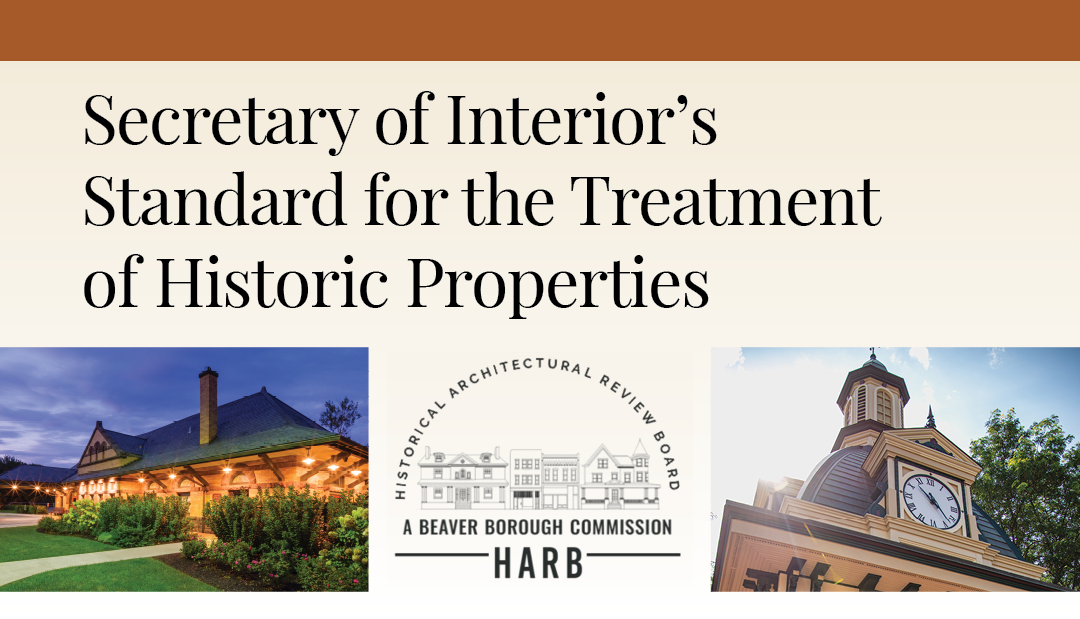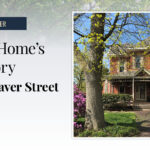Submitted by LISA SATTLER
The beautiful residential and commercial architecture throughout Beaver charms many visitors and leads many families to buy here. And many property owners are thrilled to own a building that is not only their home or business, but a piece of history! But how do we go about determining how to preserve our beautiful town and still function in the modern world?
Buildings have varying degrees of purpose, and we all must live in and renovate our properties in a sensible way. Fortunately, Preservation Guidelines are available to residents for reference. Beaver’s Historical and Architectural Review Board (HARB) uses The Secretary of Interior’s Standard for the Treatment of Historic Properties as general guidelines for renovating historic properties.
These guidelines have been used in many parts of the country by Federal, State, and local governments that have an interest in preserving a community’s historic architecture.
There are four categories to the Standards:
Preservation, Rehabilitation, Restoration and Reconstruction.
Preservation
The Preservation Standard defines preservation as using materials or work methods necessary to keep the “the existing form, integrity, and materials of an historic property”. The Preservation Standard requires keeping the “greatest amount of historic fabric along with the building’s historic form.”
Consider Preservation When:
- The property’s distinct materials, features, and spaces are mostly intact and convey historic significance without needing extensive repair
or replacement. - The depiction of the historic property at a particular period of time is not appropriate.
- A continuing or new use of the historic property doesn’t need additions or extensive alterations.
An example of a building in Beaver that has been Preserved is: Town Center Associates, LLC office building at 1147 Third Street, Beaver, shown right. This pre-Civil War structure originally functioned as a residence and is now an office building. The brick has been painted, and the function changed; however, the basic features and historic elements have remained the same.
Rehabilitation
The Rehabilitation Standard allows changes to the building for the building to have a compatible use. The repairs or alterations should preserve the “portions or features which convey its historical, cultural, or architectural values”. So, this standard allows for changes that respect and keep the historic character, while still allowing modern functionality to the building.
Consider Rehabilitation When:
- The repair and replacement of deteriorated features is necessary.
- Alterations or additions to the property are planned for a new or continued use of the property.
- The depiction of the historic property at a particular period of time is not appropriate.
An example of a building in Beaver that has been Rehabilitated is: The Beaver Station and Cultural Events Center. The original use as a train station was abandoned, but in recent years has been modified to become an event center, with historic elements retained as much as possible.
Restoration
The Restoration Standard means “accurately depicting the form, features, and character of a property as it appeared at a particular period of time”. In other words, the property owner is literally going back in time to make the building look as it did when it was new. Doing this may require removing additions or other features from other later periods of the property’s history, while preserving the historic elements from the time the structure was built.
Consider Restoration When:
- The property’s design, architectural, or historical significance during a particular time outweighs
the potential loss of extant materials, features, spaces, and finishes that characterize other historical periods. - There is substantial physical and documentary evidence for the restoration work.
- Contemporary alterations or additions are not planned.
An example of a building in Beaver that has been restored is: The Log House on River Road. This original log structure has been restored to look and function as it did when newly built.
Reconstruction
The Reconstruction Standard is the complete rebuilding of an historic property to a specific period of significance. The historic property would be “of new construction, the form, features, and detailing of the non-surviving site”.
Consider Reconstruction When:
- A contemporary depiction is necessary to understand and interpret a property’s
historic value. - No other property with the same associative value has survived.
- Sufficient historical documentation exists to ensure an accurate reproduction of the property.
An example of a building in Beaver that has been reconstructed is: The Beaver Clock Tower, a replica of the clock tower that was on the Victorian-style courthouse that burned.











